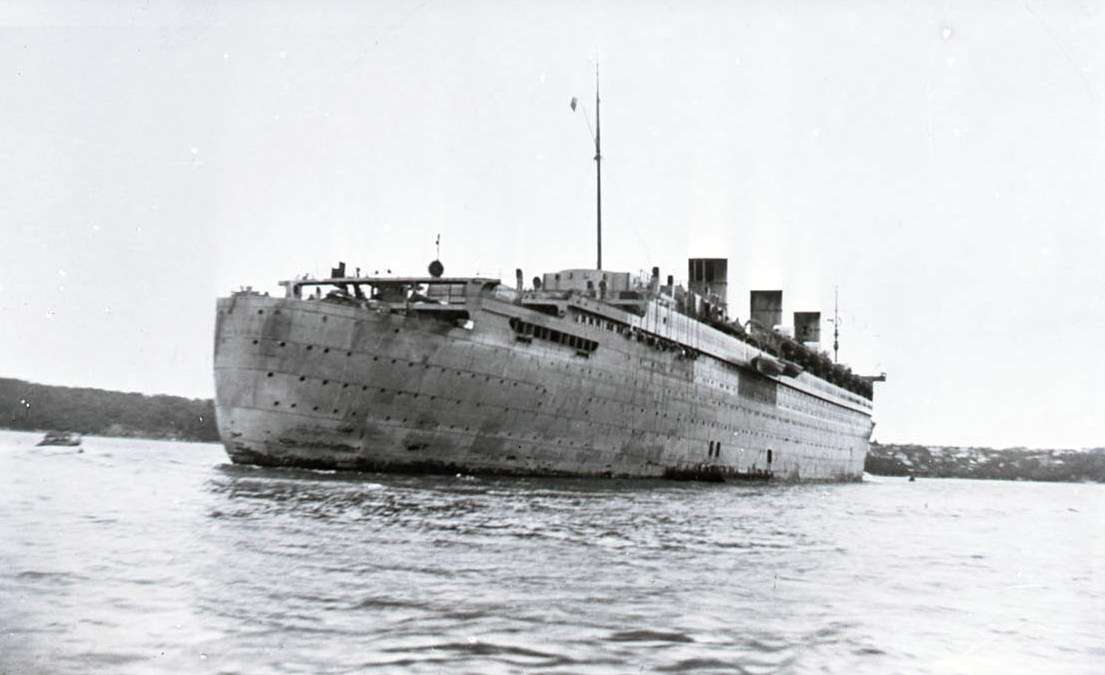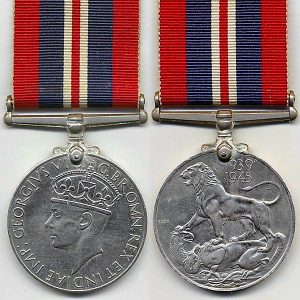John Percival Blencowe [9968]

1916-1980
Father Nm: Percival Stuart Blencowe [8454] born 1887 Fitzroy Vic died 10.1.1951 S Melbourne
Mother Nm: Mona Lillian Taylor [9966] born 1.11.1893 North Fitzroy Victoria Australia died 10.4.1972 Auburn Vic
Marriage Dt:24 July 1943, New Guinea
K comments:Brother Edwin Stuart served in WW2
Spouse comments:Jean Philomena Klose –2014. BIRTH Unknown
DEATH 14 FEBRUARY 2014
(Research): Ancestry
Oldest Known Ancestor:
Children:
Birth
26 June 1916 • Malvern, Victoria
WW2
Blencowe John Percival, Warrant Officer II, NX4945, 2/25th Bn., 2nd AIF
Synopsis
John Percival Blencowe’s war was a bit different to most and it began in 1940 when he volunteered in New Guinea to join the Australian Army when he was a young Plantation Manager. This chosen career and location was to shape an awful lot of his war service.
Initially, John was recruited for the 2/25th Infantry, trained in Queensland and sent to the Middle East like a lot of his comrades. Unusually he was wounded in 1941 by French Vichy troops in Lebanon which in itself is one of the less known conflicts of WW2. He recovered in Palestine (he also had Malaria) and like all the Australian forces in the Middle East, he was brought home in 1942 for a completely different war. One that really suited his experience of living and working in New Guinea. He trained in Queensland in jungle warfare and was one of the first men of the 21st AIF Brigade to be sent to reinforce the battling Australians forces at the Kokoda Mission.
During this mission he was evacuated out of the fighting (dysentery) and when recovered his local knowledge put to use. He transferred to the Australian New Guinea Administration Unit (ANGAU) tasked with managing the administration of New Guinea during the war. Becoming a Patrol Officer John was responsible for District patrols and issues. One of these issues, locating and recovering allied airmen who had crashed in the dangerously misty mountains of New Guinea.
One such crash on 19 February 1944 (that John reported on) began when a US C47 Dakota while over Mt Victoria saw the site of what is believed to have been an earlier US aircraft crash. the Pilot “Jack” Wondaal decided to circle round and locate for recovery but he misjudged this very dangerous terrain and crashed the Dakota into the hills killing all but himself. John, when called into a recovery operation, flew in a Dakota over the area and he himself spotted the two crashed planes and so set about a recovery mission. He with 2 US administrators and 6 local carriers made there way up to the south side of Mt. Victoria over several days via the infamous Kokoda Track. When they got to the crash site sadly it was physically impossible to recover the bodies of the airmen the aircraft dangling in a sheer drop, John then set his mind to the other crash site and requested more support to go to there but he was turned down because of lack of resources. Both these two aircraft and crews were eventually recovered many years later. This incident is mentioned in the book “The Third Force” The ANGAU in New Guinea 1942-1946 by Alan Powell. John served out his time as a Patrol Officer with ANGAU. John survived to return to Australia and died after living many years in South Australia with his wife Jean.
1940
- 15 July. Enlisted at Rabaul, New Guinea. Occupation Plantation Manager.

- 8 August. Joins the newly formed 2/25th Battalion at the Grovely Camp in Queensland.
- After completing its training the 2/25th Bn undertook garrison duties in Darwin before deploying to the Middle East.
Following this it took part in the fighting in New Guinea, undertaking two deployments there, firstly in 1942–1943 during which it took part the fighting along the Kokoda Track and around Buna–Gona, and then again in 1943–1944 when it helped to secure Lae before advancing into Finisterre Ranges. The battalion’s final involvement in the war came in mid-1945, when it took part in the Borneo campaign, landing at Balikpapan. The battalion was disbanded in early 1946
1941
- 24 February. The 2/25th Bn embarks from Darwin for Redbank near Brisbane where John was promoted to Lance Corporal. After a few weeks, it proceeded to Sydney
- April. The 2/25th Bn. embarks from Sydney for Egypt on the Queen Mary.

The stripped-down Queen Mary in Sydney Harbour 1941. Refitted as a troop carrier all the luxury liner fittings gone. source The sea museum webpage - 3 May. The battalion arrived at Port Tewfik from where they entrained and were moved by rail and then the road to a camp near Ikingi Maryut.
- May. After a brief move to Mersa Matruh the 2/25th were destined to be part of the Tobruk Garrison however French Vichy takeover of Lebanon caused Allied forces to try and regain this territory and 2/25th sent there.

AUSTRALIAN FORCES IN LEBANON, 1941 (AUS 533) Australian troops among the ruins of the old Crusader castle at Sidon, Lebanon. Copyright: © IWM. - 19 June. Wounded in action (Shock) Merdjayoun, Lebanon.The 2/25th battalion fought its only major battle of the campaign at the inland town of Merdjayoun on 19 June. Given inadequate time to prepare, and confronted by Vichy French tanks, the 2/25th failed to capture Merdjayoun, which had previously been occupied by Australian forces but lost to a counter offensive. The battalion suffered heavy casualties, including over 50 men taken prisoner. source Wikipedia.

Melbourne Newspaper reports – L/CPL. J. BLENCOWE, 23, wounded in action, Is the eldest son of Mr and Mrs, P. Blencowe, Lancefield. He was educated at Scotch College and Dockie Agricultural College. He enlisted 12 months ago In NewGuinea where he was managing plantations for Burns Philp and Co - 12 July. Transferred to 2nd Australian Convalescent Depot.

The 2nd Convalescent depot at Kafr Vitkin, Palestine - August. No sooner is John discharged from hospital he goes down with Malaria and admitted to No 1 Convalescent Depot.
- 7 October. Discharged from medical care to return to 2/25th Bn.
1942
- 2 February. 2/25th Bn. embarks from Suez bound for Australia. A decision to take Australian troops out of the Middle East and return them home to re-organise to defend the Pacific region.
- 10 March. The 2/25th disembarked in Adelaide on 10 March. The 2/25th then underwent jungle warfare training.
- 10 August. Service record entries show embarked for Port Moresby on HMT5 a Royal Navy Trawler. Arrived on the 17 August. John seems to have been ” the advance guard of the seasoned 7th Australian Division arrived in Papua under Brigadier A.W. Potts.” 2 It makes sense that men like John who had New Guinea jungle experience were selected to go to the aid of Australia forces trying to hold the Kokoda Track in earlier August. Note that his 2/25th Bn. joined the fight at Ioribaiwa on 15th September.
 .
. - 20 August. Service record ” Evacuated M.D.S. Bomana Mission and transferred to X list.” Clearly John is evacuated from a tight situation and transferred to the Australian New Guinea Administrative Unit (ANGAU). He apparently doesn’t take part in any of the more of the fighting. Again his knowledge and experience of the area influence what he is tasked with.
Background Note. As the situation in New Guinea worsened, the 21st Brigade was hastily deployed there in August 1942. Under the command of Brigadier Arnold Potts, who had taken over from Stevens in April, they were sent to Port Moresby from where they reinforced the militiamen of the 39th Battalion, fighting a rearguard action on the Kokoda Track. Throughout late August and into September the brigade fought a number of delaying actions along the track, initially around Isurava, but as the Japanese advance towards Port Moresby continued they were pushed back to Ioribaiwa.
- 9 September. Note: The 2/25th Bn. arrived in Port Moresby to reinforce the battered Australian units on the Kokoda Trail. Joining the fray at Ioribaiwa on 15 September, the battalion participated in the last Australian withdrawal on the trail – to Imita Ridge.
- 19 September. Promoted To Corporal
- 4 October. Taken ill with dysentery and admitted to 113 Convalescent Depot.
- 1 November. Evacuated to Infectious Disease Hospital.
- 19 December. Rejoined 2/25th Bn.
1943-1945
- 22 February 1943. Promoted to Acting Sergeant.
- 30 March 1943. Promoted to Acting Warrant Officer. Confirmed as a Sergeant.
- 28 June 1943. Detached on duty to Australia probably for a period of training and induction then evidence he returned to New Guinea certainly by February 1944.
Note: John’s army records are scant until discharge but it seems taken in Army Administration with the Australian New Guinea Administrative Unit (ANGAU).Note: ANGAU was also responsible for recruiting, organising and supervising local labour for the Australian and American armed forces in New Guinea included rehabilitation of the local inhabitants in reoccupied areas. It was also responsible for the administration of the Pacific Islands Regiment. The ANGAU officers and their New Guinean carriers, labourers, scouts, guides and police were highly regarded by the American and Australian military. Wikipedia


- 19 February. John was to be tasked with recovering the victims of a crash in the New Guinea Mountains on this day. An USAF C47 Dakota aircraft while over Mt Victoria saw the site of what is believed to have been an earlier US aircraft crash. the Pilot “Jack” Wondaal decided to circle round and locate for recovery but he misjudged this very dangerous terrain and crashed the Dakota into the hills killing all but himself. Johns role in the finding of an American C47 aircraft that crashed into the southern slope of Mount Victoria is documented in the book ‘Third Force’ by Alan Powell.


Pages 188-189 Third Force. The book relies of Johns report to his District Office in April about this mission. AWM
Note: The plane that John found was USAF C-47B-1-DL Dakota Serial Number 43-16204 of the 5th AF 360th Service Group. The report on Pacific Wrecks web page says the Pilot 2nd Lt. Jacob “Jack” E. Wondaal 8th Service Group (KIA, BR) Chicago, IL (survived) 6 crew members did not. The website also states the pilot saw another wreck on the mountainside and in attempting to a get better look crashed itself. Having failed to get to the C47 43-16204 crash it would have been a good reason why John was wanting to investigate more the crashed aircraft other site. For more information on this crash
© Pacific Wrecks – C-47B-1-DL Dakota Serial Number 43-16204

Douglas C-47 “Skytrains”, 12th Air Force Troop Carrier Wing, loaded with paratroopers on their way for the invasion of southern France, 15 August 1944.
- 3 August 1945. Discharged from Duty.
Medals
We have no medal records but he was entitled to these medals for his service




Sources
- Service Records of John Percival Blencowe
- The Battle for Australia
- The Third Force ANGAU’s New Guinea War by Alan Powell
- A Diary for JP Blencowe wartime is held by AWM
- Ancestry Military Tree of Blencowes ww2
Death 1980.
John Percival Blencowe
BIRTH 1917
DEATH 29 May 1980 (aged 62–63)
BURIAL .Centennial Park Cemetery
Pasadena, Mitcham City, South Australia, Australia
MEMORIAL ID 153545478
Gallery


Facebook reference to a book that features John’s time in New Guinea.







